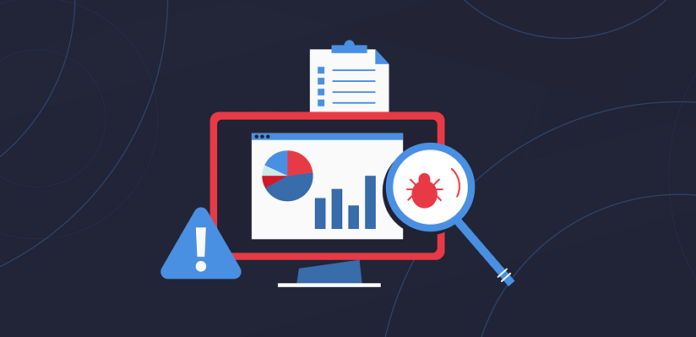Penetration testing is the most important addition to every firm’s web application firewall (WAF) security policy. The simulated attack methods are designed to test the system for its incident response, its efficiency, and response time. Once the penetration testing methodology is used to detect exploitable vulnerabilities, the pentesting procedure is also extended to cover various components such as frontend and backend servers, application protocol interfaces (APIs), etc.
Once the pentesting procedure is completed, firms can utilize the final report and its recommendations to reform the system for a better security posture. Certain third-party penetration testing service providers provide their assistance to in-house IT teams during the resolution stage for additional support after the testing phase.
5 Steps Involved in Penetration Testing Methodology
The important phases of pentesting can be generally consolidated into five major phases – reconnaissance (or gathering preliminary information), detection of vulnerabilities, privilege escalation and other simulated attack methods, length of attack period, and analysis of systems leading to WAF configuration for further testing.
1.Gathering information
In this stage, preliminary information about the system is gathered to derive the context of testing and designing suitable attack vectors. This data will also be used to define the scope of testing, objectives, and goals of the entire procedure. Most types of information such as web domains, networks, appliances, and mail servers can prove useful for the testing team, especially in the case of white-box testing techniques which simulate insider attacks.
2. Scanning and detecting vulnerabilities
This is the second phase involved in web app pentesting which include scanning of potential vulnerabilities present in an app and detection of foreign intrusion and escalation of vulnerabilities derived from the initial information set. The simulated attempts usually belong to a static or dynamic analysis form. Dynamic analysis of the source code evaluates the system in its running state and presents a more realistic picture of the system’s overall posture in terms of performance. The static analysis format tests the application code to gain an understanding of the expected input and output parameters. The tools used for this kind of analysis evaluates the entire code in a single go and is more time-saving.
3.Privilege escalation (exploitation of vulnerabilities)
Here, the testing team will use various general and unique attack methods to understand the security loopholes and the priority of resolving each one. Examples include SQL injection attacks, privilege escalation from acquired (or given) user-employee credentials, hidden backdoors, cross-site scripting (XSS) attacks, etc. Once further vulnerabilities pop out from these initial attacks, hackers use this to gain access to the system and steal data, modify website traffic, and use external redirects to lead users to suspicious websites. Therefore, the testing team will employ the same approach to understand the extent of exploitation and compromising of the system.
4. Length of attack period
An important factor to be analyzed for every attack simulation is how long the hackers are able to stay hidden within the system without being detected. Certain vulnerabilities may open up backdoors that provide hackers the opportunity to remain concealed or keep returning due to the temporary security measures set in place. These are called Advanced Persistent Threats (APT) and are rated for criticality depending on the opportunity provided to the hackers for in-depth and elongated access to steal sensitive data and manipulate the systems.
5. Analysis and further configuration
The final stage includes the analysis of the results gained from testing the system so far including the kind of vulnerabilities discovered and exploited, the extent of security risk posed by the vulnerability and access to sensitive data gained, and the time required for detection. The testing team will use this information to modify the system’s WAF configurations before subjecting it to further testing for the implementation of security solutions to protect against future attacks.
What are the different types of penetration testing?
There will be different aspects of the system that need testing for resilience against insider and outsider attacks. For example, external pentesting focuses on the firm’s public-facing assets such as web applications, browsers, email and domain name servers, etc from where useful data can be illegally gained by hackers. Internal pentesting will focus on the attacks on the system from the inside including attacks after accessing the WAF and hackers using stolen credentials for phishing purposes.
Tests are also done on different degrees of information provided to the testing teams – in blind pentesting, testers are given very few details such as the company name. Double-blind pentesting provides no prior information, leaving the security teams to defend themselves in the best manner possible. Both these forms of pentesting allow all the stakeholders to gain a glimpse into how an actual assault takes place. Finally, targeted testing is the opposite of the above kind of attacks and works on previously gained information with real-time feedback informing the next steps of the ethical hacker.
These are certain aspects that every firm must be aware about penetration testing methodologies before stepping into the process. Firms should use this information to refine their process for a selection of a third-party penetration service provider if they’re conducting the test externally.








